Alberta
Alberta wildfire situation (May 8, 6:00 p.m.)
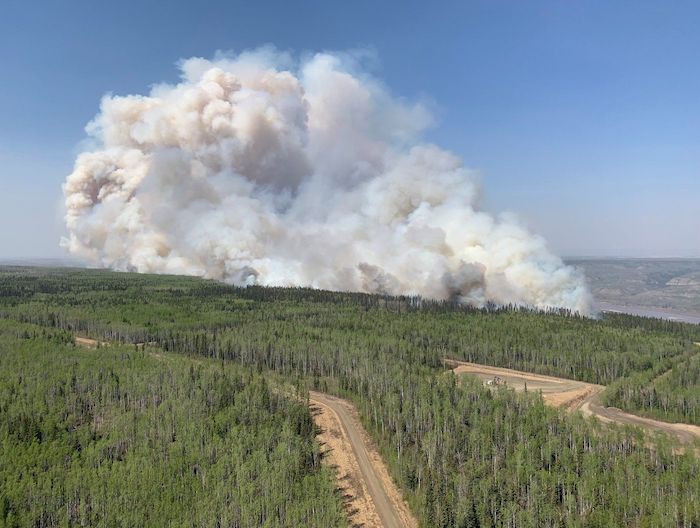
More than 29,000 individuals have been evacuated from communities throughout north and central Alberta.
Those evacuated due to wildfires should register at local reception centres or at emergencyregistration.alberta.
Current situation
- Alberta has declared a provincial state of emergency. Visit alberta.ca/emergency for information or call 310-4455, now available 24-7.
- The evacuation for the town of Edson as well as central and eastern parts of Yellowhead County has lifted. Some areas remain under evacuation order.
- The Big Lakes County evacuation order has been downgraded to a one-hour evacuation alert. Large portions of the affected area currently have no electrical power or natural gas services.
- The mandatory evacuation notice has been lifted in Northern Sunrise County. Residents are now allowed to return to their homes.
- Mandatory evacuation orders remain in effect for the following areas. Please check alberta.ca/emergency or download the Alberta Emergency Alert mobile app for complete information:
- Parts of Brazeau County, including the town of Drayton Valley. Evacuees should register in Edmonton at the Expo Centre, Hall C, at 7515 118 Avenue.
- The entire town of Rainbow Lake. Evacuees should register in High Level at the High Level Arena, at 10101 105 Avenue.
- Fox Creek, Little Smoky and surrounding areas. Evacuees should register at the Allan and Jean Millar Centre, at 58 Sunset Boulevard in Whitecourt.
- Parts of Sturgeon Lake Cree Nation and the Municipal District of Greenview. Evacuees should register at Memorial Hall, 4808 50 Street in Valleyview.
- Parts of the County of Grande Prairie. Evacuees should register at the Bonnets Energy Centre, 10017 99 Avenue, Grande Prairie.
- Parts of Big Lakes County. Evacuees should register at Elks Rodeo Hall on Highway 749.
- Parts of Lac Ste. Anne County. Evacuees should register at the Mayerthorpe Diamond Centre, at 4184 54 Street.
- Parts of Yellowhead County (east of Range Road 110 and east of Range Road 101 and south of Township Road 560). Evacuees should register at the Dr. Duncan Murray Rec Centre, 805 Switzer Drive, Hinton, or at the Jasper Fitness & Aquatics Centre, at 305 Bonhomme Street, Jasper.
- Parkland County and the Hamlet of Entwistle. Evacuees should register at Wabamun Jubilee Hall, at 5132 53 Avenue in Wabamun.
- Residents of the following areas should be prepared to evacuate on short notice:
- The Grovesdale area of the Municipal District of Greenview.
- Clearwater County in the area west of Beaverdam Provincial Recreation Area and east of the Bighorn Dam, including the hamlet of Nordegg.
- Parts of the County of Grande Prairie, including the Pipestone Creek area.
- The town of Valleyview.
- Lac St. Anne County, in the area north of Township Road 560 and south of Highway 43, and between Range Road 60 to 53 and the community of Cherhill.
- Athabasca County, in the area of Range Road 214 and Range Road 215 north of Township Road 674. The prepare to evacuate notice for everyone else in the area between Jackfish Lake and the Athabasca River to the west remains in effect.
- Big Lakes County
- MD of Greenview, in the area west of Highway 40 and south of the Wapiti River to the British Columbia border.
- Eighteen declared states of local emergency (SOLE) and two band council resolutions include:
- Big Lakes County
- Brazeau County
- Clear Hills County
- Drayton Valley
- Town of Edson
- MD of Fairview
- Town of Fairview
- MD of Greenview
- Town of Fox Creek
- Gift Lake Metis Settlement
- County of Grande Prairie
- Town of High Prairie
- Northern Sunrise County
- East Prairie Metis Settlement
- Peavine Metis Settlement
- Lac St. Anne County
- Parkland County
- Town of Rainbow Lake
- Yellowhead County
- The Little Red River Cree Nation (Fox Lake) has declared a SOLE through Band Council Resolution
- Whitefish Lake First Nation has declared a SOLE through Band Council Resolution
Information for evacuees
- Evacuees should register at the reception centre identified for their community so staff can quickly assist them and connect them with the resources they need.
- Evacuees with special needs who are unable to stay in an evacuation centre can request emergency financial assistance to cover hotel accommodations.
- Special needs could include having a disability, a medical condition or other family needs.
- Apply for emergency financial assistance by visiting an Alberta Supports Centre or calling the Income Support Contact Centre at 1-866-644-5135. Information is also available through the Alberta Supports Contact Centre at 1-877-644-9992.
- Any Albertan who has evacuated under mandatory order for seven consecutive days or more can apply for a one-time emergency evacuation payment at alberta.ca/emergency using an Alberta.ca Account.
- Eligible evacuees will receive $1,250 per adult and an additional $500 per dependent child under 18 years.
- Funds can take up to 24 hours to flow into accounts and will be disbursed via e-transfer.
- Evacuees unable to receive an e-transfer or who cannot apply online can contact 310-4455 for assistance and to make alternate arrangements.
- Albertans affected by wildfires, including evacuees, can access supports by calling the Alberta Supports Contact Centre at 1-877-644-9992.
- The centre is open from 8:15 a.m. to 8 p.m. on weekdays and from 9 a.m. to 3 p.m. on weekends.
- The Income Support Contact Centre is also available 24-7 and provides emergency financial assistance. Call 1-866-644-5135.
- Albertans can report a price gouging complaint by calling 310-4455.
Fire bans and other restrictions
- Unusually warm, dry weather and strong winds mean it is easier for a wildfire to start and spread.
- As a result of these conditions, there is a fire ban issued for most of the province. Fire restrictions in some parks and southern municipalities are also in effect. No open burning is allowed, including backyard fire pits, inside the Forest Protection Area. Alberta Parks and many municipalities and communities have ordered their own bans and restrictions. For more information, visit albertafirebans.ca.
- A provincial off-highway vehicle (OHV) restriction is also in place, which means the recreational use of off-highway vehicles on public land, including on designated OHV trails, is prohibited.
Wildfire activity updates
- There are currently 88 active wildfires in the Forest Protection Area, 25 of which are classified as out of control.
- Information on all wildfires is on the Alberta Wildfire dashboard and the Alberta Wildfire app.
Travel
- There are multiple road closures and advisories for north and central Alberta.
- Visit 511.alberta.ca for up-to-date information on road closures and travel advisories.
Health
- No additional evacuations were required over the last 24 hours. Evacuated patients and continuing care residents are being relocated in safe and appropriate settings. All zones are opening care spaces to accommodate those in need.
- Alberta Health Services has issued a boil water advisory for the River Bend Water Co-op in Big Lakes County as a precautionary measure.
- The advisory is in place for any remaining water within the water system, and for when water service is restored following wildfire evacuation. Instructions are available on the Alberta Health Services Coping with Emergencies website.
- All patients who are expected for assessment or treatment for a cancer diagnosis in an evacuated area are asked to call the Cancer Centre Transition Team (toll-free at 1-888-432-8865) to ensure they are receiving the care they require.
- All appointments with laboratory services, mental health and public health in evacuated communities continue to be postponed at this time. Clients will be contacted directly by AHS to be rescheduled as soon as possible. Dialysis clients are being booked at alternate sites. Home care clients impacted by evacuations are being contacted to arrange for alternative home visits and support from nursing teams.
- EMS and zones continue to be fully engaged to ensure the safe transport and care of all patients/residents. Other zones and provincial programs are assisting with reception centres and ensuring availability of spaces/equipment as needed.
- Residents affected by the wildfires who have health care-related questions and are looking for up-to-date information about the wildfires or health care resources, should visit the Alberta Health Services Wildfire Resources webpage.
- For non-emergency health advice, including information on their health care options, residents should call Health Link at 811.
Mental health and addiction resources
- If you’re struggling with your mental health or need to talk to someone about how you are feeling, resources are available:
- Call the AHS Mental Health Helpline at 1-877-303-2642 or Health Link at 811
- Call 211 or text INFO to 211 or visit ab.211.ca to access digital supports or find local services near you
- Call Counselling Alberta at 1-833-827-4230 or visit counsellingalberta.com for virtual counselling services
- Addiction supports are also available:
- Call the AHS Addiction Helpline at 1-866-332-2322 or Health Link at 811
- Call the Virtual Opioid Dependency Program at 1-844-383-7688 for same-day treatment
Air quality concerns
- As of noon today, most conditions across the province are rated “low-risk”.
- Conditions in Fort Chipewyan, Fort McKay and Fort McKay South are rated “moderate risk”.
- People who are concerned about air quality impacts on their health should refer to the Air Quality Health Index. The Air Quality Health Index is updated hourly.
- Alberta Health Services is deploying mobile air quality monitoring, as multiple communities are reporting high levels of smoke and ash residue.
Justice
- The Drayton Valley circuit court is within the Town of Drayton Valley’s evacuation order. The next sitting is scheduled for Tuesday, May 16.
Agriculture and livestock
- Agricultural societies may have room for livestock evacuated from wildfire areas. Contact the Alberta Association of Agricultural Societies.
- Evacuated farmers and ranchers:
- Should visit alberta.ca/emergency to find the most up-to-date information on the current wildfire situation.
- Can contact the wildfire resource line at 310-4455 with agriculture and livestock-related questions.
- Should register at the reception centre identified for their community so staff can quickly assist them and connect them with the resources they need.
- May need re-entry permits if they want to go back into an evacuated area to check on livestock and should check with their municipality before entering.
Alberta Emergency Alerts
- For up-to-the-minute Alberta Emergency Alert information, visit Alberta Emergency Alert.
- Albertans are encouraged to download the Alberta Emergency Alert mobile app, which immediately pushes all alerts out to subscribers.
- Albertans may notice emergency alerts for their community expiring or being removed from the system. This does not mean the emergency is over. What it does mean is that your community has been able to return to normal communication methods to update residents via local media.
- Please pay close attention to alert updates, local media and the alberta.ca/emergency website for up-to-date information on evacuation orders, reception centres and resources for people who have been impacted.
Donations
- Albertans who wish to help can make cash donations through the Canadian Red Cross or within their regions to a recognized charitable organization of their choice.
- Financial donations are preferred for disaster events, as most critical items can be sourced locally and monetary donations can be used to support vulnerable populations and be targeted to mental health initiatives in support of evacuees.
- Individuals and companies with goods or services to offer or donate to support government’s response to the wildfire event can email [email protected].
ca.
Insurance
- Albertans with questions about their insurance coverage during the wildfires should contact their insurance representative.
- The Insurance Bureau of Canada (IBC) has updated information about insurance during wildfires. Albertans affected by wildfires can visit the IBC web page for information on property and auto insurance.
- Albertans can call IBCs Consumer Information Centre at 1-844-2ask-IBC (1-844-227-5422) or email IBC’s regional office at [email protected] (Western and Pacific regions).
Alberta
High costs, low returns – Canada’s wildly expensive emissions cap
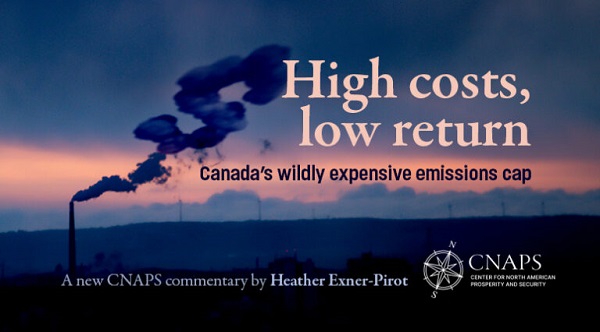
In this new commentary, Director of Energy, Natural Resources, and Environment Heather Exner-Pirot reveals why the Canadian government’s oil and gas emissions cap isn’t just expensive – it’s economic insanity.
Canada is the world’s third-largest exporter of oil, fourth-largest producer, and top source of imports to the United States. Much of Canada’s oil wealth is concentrated in the oil sands in northern Alberta, which hosts 99 percent of the country’s enormous oil endowment: about 160 billion barrels of proven reserves, of a total resource of approximately 1.8 trillion barrels. This is the major source of oil to the United States refinery complex, a large part of which is optimized for the oil sands’ heavy oil.
Reliability of energy supply has remerged as a major geopolitical issue. Canadian oil and gas is an essential component of North American energy security. Yet a proposed cap on emissions from the sectors promises to cut Canadian production and exports in the years ahead. It would be hard to provide less environmental benefit for a higher economic and security cost. There are far better ways to reduce emissions while maintaining North America’s security of energy supply.
The high cost of the cap
In 1994 a Liberal federal government, Alberta provincial conservative government and representatives from the oil and gas industry, working together through the national oil sands task force, developed A New Energy Vision for Canada. Their efforts turned what was then a middling resource into a trillion dollar nation-building project. Production has increased tenfold since the report came out.
The task force acknowledged the need for industry to “put its best efforts toward … reducing greenhouse gas emissions.” However, it also expected governments to “understand” that there “is no benefit to Canada or to the environment to have production and value-added processing done outside of the country in less efficient jurisdictions … policies set by regulator must not result in discouraging oil sands production.”
As part of its efforts to meet its climate goals under the Paris Accord, the Canadian government proposed a regulatory framework for an emissions cap on the oil and gas sector in December 2023. It set a legally binding limit on greenhouse gas emissions, targeting a 35 to 38 percent reduction from 2019 levels by 2030 for upstream operations, through regulations to be made under the Canadian Environmental Protection Act, 1999 (CEPA).
The federal government has not yet finalized its proposed regulations. However, industry experts and economists have criticized the current iteration as logistically unworkable, overly expensive, and likely to be challenged as unconstitutional. In effect, this policy layers a cap-and-trade system for just one sector (oil and gas) on top of a competing carbon pricing mechanism (the large-emitter trading systems, often referred to as the industrial carbon price), a discriminatory practice that also undermines the entire economic rationale of a carbon pricing system.
While the Canadian government has maintained that it is focused on reducing emissions rather than production – the latter of which would put it at odds with provincial jurisdiction over non-renewable resources – a series of third party analyses as well as the Parliamentary Budget Office’s own impact assessment find it would indeed constrain Canadian oil and gas production. The economic cost of the emissions cap far exceeds any corresponding benefit in reduced emissions.
How much will the emissions cap cost in terms of dollar per tonne of carbon in avoided emissions, both domestically and globally? Based solely on the cost to the Canadian economy, we estimate the emission cap is equivalent to a C$2,887/tonne carbon price by 2032.
Assuming no impact on global demand and full substitution by non-Canadian crudes, it finds that the cost of each tonne of carbon displaced globally is between C$96,000 to C$289,000 for oil sands bitumen production. For displaced Canadian conventional and natural gas, the cost is infinite, i.e. global emissions would actually be higher for every barrel or unit of Canadian oil and gas displaced with competitor products as a result of the emissions cap.
Canadian oil and gas emissions reduction efforts
The oil and gas sector is the highest emitting economic sector in Canada. However, it has made substantial efforts to reduce emissions over the past two decades and is succeeding. Absolute emissions in the sector peaked in 2014, despite production growing by over a million barrels of oil equivalent since (see Figure 1).
 Figure 1 Indexed greenhouse gas (GHG) emissions (and gross domestic product (GDP) at basic prices, for the oil and gas extraction industry, 2009 to 2022 (2009 = 100). Source: Statistics Canada 2024.
Figure 1 Indexed greenhouse gas (GHG) emissions (and gross domestic product (GDP) at basic prices, for the oil and gas extraction industry, 2009 to 2022 (2009 = 100). Source: Statistics Canada 2024.
Much of this success can be attributed to methane capture, particularly in the natural gas and conventional oil sectors, where absolute emissions peaked in 2007 and 2014 respectively.
Since 2014, the oil sands have dramatically increased production by over a million barrels per day, but at the same time have reduced the emissions per barrel every year, leaving the absolute emissions of the oil and gas sector relatively flat. The oil sands are performing well vis-à-vis their international peers, seeing their emissions per barrel decline by 30 percent since 2013, compared to 21 percent for global majors and 34 percent for US E&Ps (exploration and production companies) (see Figure 2).
 Figure 2 Indexed Oil Sands GHG relative intensity trend (2013=100). Source: BMO Capital Markets, “I Want What You Got: Canada’s Oil Resource Advantage,” April 2025
Figure 2 Indexed Oil Sands GHG relative intensity trend (2013=100). Source: BMO Capital Markets, “I Want What You Got: Canada’s Oil Resource Advantage,” April 2025
On an emissions intensity absolute basis, the oil sands have significantly outperformed their peers, shaving off 25kg/barrel of emissions since 2013 (see Figure 3) and more than 65kg/barrel since the oil sands task force wrote their report in 1994.
As emissions improvements from methane reductions plateau, the oil sands are likely to outperform their conventional peers in emissions per barrel reductions going forward. The sector is working on strategies such as solvent extraction and carbon capture and storage that, if implemented, would reduce the life-cycle emissions per barrel of oil sands to levels at or below the global crude average.
 Figure 3 Emissions intensity absolute change (kg CO2e/bbl) (2013–24E) Source: BMO Capital Markets, 2025
Figure 3 Emissions intensity absolute change (kg CO2e/bbl) (2013–24E) Source: BMO Capital Markets, 2025
The high cost of the cap
Several parties have analyzed the proposed emissions cap to determine its economic and production impact. The results of the assessments vary widely. For the purposes of this commentary we rely on the federal Office of the Parliamentary Budget Officer (PBO), which published its analysis of the proposed emissions cap in March 2025. Helpfully, the PBO provided a table summarizing the main findings of the various analyses (see Table 1).
The PBO found that the required reduction in upstream oil and gas sector production levels under an emissions cap would lower real gross domestic product (GDP) in Canada by 0.33 percent in 2030 and 0.39 percent in 2032, and reduce nominal GDP by C$20.5 billion by 2032. The PBO further estimated that achieving the legal upper bound would reduce economy-wide employment in Canada by 40,300 jobs and full-time equivalents by 54,400 in 2032.
 Table 2 Comparison of estimated impacts of the proposed emissions cap in 2030. Source: PBO 2025
Table 2 Comparison of estimated impacts of the proposed emissions cap in 2030. Source: PBO 2025
However, the PBO does not estimate the carbon price per tonne of emissions reduced. This is a useful metric as Canadians have become broadly familiar with the real-world impacts of a price on carbon. The federal government quashed the consumer carbon price at $80/tonne in March 2025, ahead of the federal election, due to its unpopularity and perceived impacts on affordability. The federal carbon pricing benchmark is scheduled to hit C$170 in 2030. ECCC has quantified the damages of a tonne of carbon dioxide – referred to as the “Social Cost of Carbon” – as C$294/tonne.
Based on PBO assumptions that the emissions cap will reduce emissions by 7.1MT and reduce GDP by $20.5 billion in 2032, the implied carbon price is C$2,887/tonne.
Emissions cap impact in a global context
Even this eye-popping figure does not tell the full story. The Canadian oil and gas production that must be withdrawn to meet the requirements of the emissions cap will be replaced in global markets from other producers; there is no reason to assume the emissions cap will affect global demand.
Based on life-cycle GHG emissions of the sample of crudes used in the US refinery complex, Canadian oil sands produce only 1 to 3 percent higher emissions than a global average[1] (see Figure 4), with some facilities producing lower emissions than the average barrel.
 Figure 4 Life Cycle GHG emissions of crude oils (kg CO2e/bbl). Source: BMO Capital Markets 2025
Figure 4 Life Cycle GHG emissions of crude oils (kg CO2e/bbl). Source: BMO Capital Markets 2025
As such, the emissions cap, if applied just to oil sands production, would only displace global emissions of 71,000 to 213,000 tonnes (1 to 3 percent of 7.1MT). At a cost of C$20.5 billion for those global emissions reductions, the price of carbon is equivalent to C$96,000 to C$289,000 per tonne (see Figure 5).
 Figure 5 Cost per tonne of emissions cap behind domestic carbon all (left) and post-global crude substitution (right)
Figure 5 Cost per tonne of emissions cap behind domestic carbon all (left) and post-global crude substitution (right)
For any displaced conventional Canadian crude oil or natural gas, the situation becomes absurd. Because Canadian conventional oil and natural gas have a lower emissions intensity than global averages, global product substitutions resulting from the emissions cap would actually serve to increase global emissions, resulting in an infinite price per tonne of carbon.
The C$100k/tonne carbon price estimate is probably low
We believe our assessment of the effective carbon price of the emissions cap at C$96,000+/tonne to be conservative for the following reasons.
First, it assumes Canadian heavy oil will be displaced in global markets by an average, archetypal crude. In fact, it would be displaced by other heavy crudes from places like Venezuela, Mexico, and Iraq (see Figure 4), which have higher average emissions per barrel than Canadian oil sands crudes. In such a circumstance, global emissions would actually rise and the price per carbon tonne from an emissions cap on oil sands production would also effectively be infinite.
Secondly, emissions cap impact assumptions by the PBO are likely conservative. Those by ECCC, based on a particular scenario outlook, are already outdated. ECCC assumed a production loss of only 0.7 percent by 2030, with oil sands production hitting approximately 3.7 million barrels (MMbbls) per day of bitumen production in 2030. According to S&P Global analysis, that level is likely to be hit this year.[2]
S&P further forecasts oil sands production to reach 4.0 MMbbls by 2030, or about 300,000 barrels more than it produces today. This would represent a far lower production growth rate than the oil sands have experienced in the past five years. But assuming the S&P forecast is correct, production would need to decline in the oil sands by 8 percent to meet the emissions cap requirements. PBO assumed only a 5.4 percent overall oil and gas production loss and ECCC assumed only 0.7 percent, while Conference Board of Canada assumed an 11.1 percent loss and Deloitte assumed 11.5 percent (see Table 1). Production numbers to date more closely align with Conference Board of Canada and Deloitte projections.
Let’s make the Canadian oil and gas sector better, not smaller
The Canadian oil and gas sector, and in particular the oil sands, has a responsibility to do their part to reduce emissions while maintaining competitive businesses that can support good Canadian jobs, provide government revenues and diversify exports. The oil sands sector has re-invested for decades in continuous improvements to drive down production costs while improving its emissions per barrel.
It is hard to conceive of a more expensive and divisive way to reduce emissions from the sector and from the Canadian economy than the proposed emissions cap. Other expensive programs, such as Norway’s EV subsidies, the United Kingdom’s offshore wind contracts-for-difference, Germany’s Energiewende feed-in-tariffs and surcharges, and US Inflation Reduction Act investment tax credits, don’t come close to the high costs of the emissions cap on a price-per-tonne of carbon abated basis.
The emissions cap, as currently proposed, will make Canada’s oil and gas sector significantly less competitive, harm investment, and undermine Canada’s vision to be an energy superpower. This policy will also reduce the oil and gas sector’s capacity to invest in technologies that drive additional emission reductions, such as solvents and carbon capture, especially in our current lower price environment. As such it is more likely to undermine climate action than support it.
The federal and provincial governments have come together to advance a vision for Canadian energy in the past. In this moment, they have the opportunity once again to find real solutions to the climate challenge while harnessing the energy sector to advance Canada’s economic well-being, productivity, and global energy security.
About the author
Heather Exner-Pirot is Director of Energy, Natural Resources, and Environment at the Macdonald-Laurier Institute.
Alberta
Calgary taxpayers forced to pay for art project that telephones the Bow River

From the Canadian Taxpayers Federation
The Canadian Taxpayers Federation is calling on the City of Calgary to scrap the Calgary Arts Development Authority after it spent $65,000 on a telephone line to the Bow River.
“If someone wants to listen to a river, they can go sit next to one, but the City of Calgary should not force taxpayers to pay for this,” said Kris Sims, CTF Alberta Director. “If phoning a river floats your boat, you do you, but don’t force your neighbour to pay for your art choices.”
The City of Calgary spent $65,194 of taxpayers’ money for an art project dubbed “Reconnecting to the Bow” to set up a telephone line so people could call the Bow River and listen to the sound of water.
The project is running between September 2024 and December 2025, according to documents obtained by the CTF.
The art installation is a rerun of a previous version set up back in 2014.
Emails obtained by the CTF show the bureaucrats responsible for the newest version of the project wanted a new local 403 area code phone number instead of an 1-855 number to “give the authority back to the Bow,” because “the original number highlighted a proprietary and commercial relationship with the river.”
Further correspondence obtained by the CTF shows the city did not want its logo included in the displays, stating the “City of Calgary (does NOT want to have its logo on the artworks or advertisements).”
Taxpayers pay about $19 million per year for the Calgary Arts Development Authority. That’s equivalent to the total property tax bill for about 7,000 households.
Calgary bureaucrats also expressed concern the project “may not be received well, perceived as a waste of money or simply foolish.”
“That city hall employee was pointing out the obvious: This is a foolish waste of taxpayers’ money and this slush fund should be scrapped,” said Sims. “Artists should work with willing donors for their projects instead of mooching off city hall and forcing taxpayers to pay for it.”
-
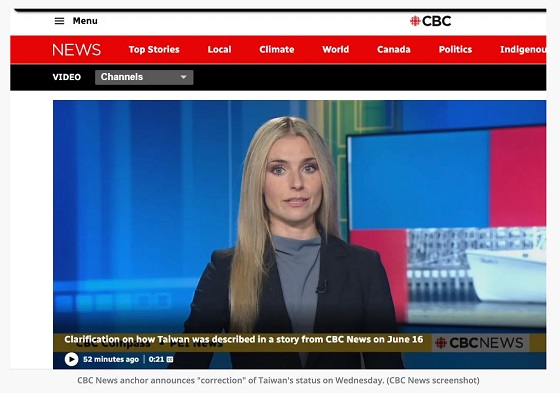
 International2 days ago
International2 days agoTaiwan Criticizes CBC Correction on United Front Buddhist Land Story, Citing PRC Political Pressure
-
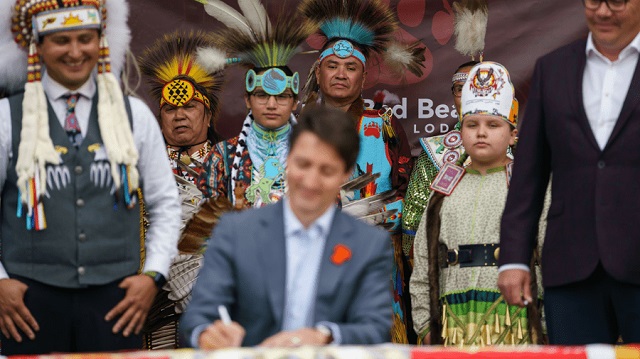
 Business2 days ago
Business2 days agoOttawa has spent nearly $18 billion settling Indigenous ‘specific claims’ since 2015
-
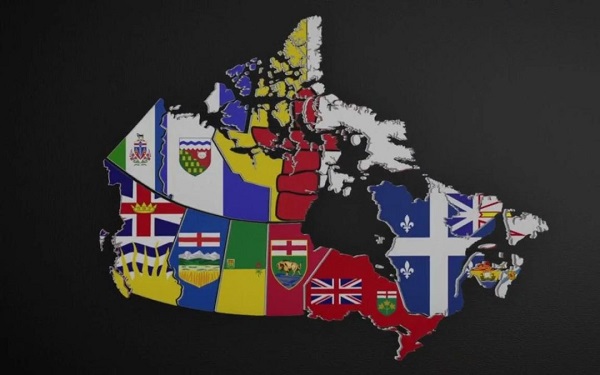
 Alberta2 days ago
Alberta2 days agoAlberta Trailblazing On Property Rights Protections
-
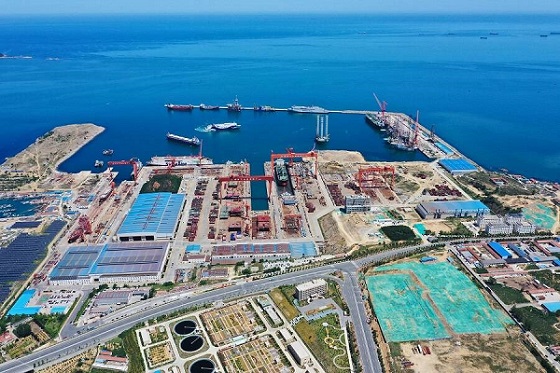
 Business15 hours ago
Business15 hours agoOttawa Slams Eby Government Over Chinese Shipyard Deal, Citing Security and Sovereignty Risks
-
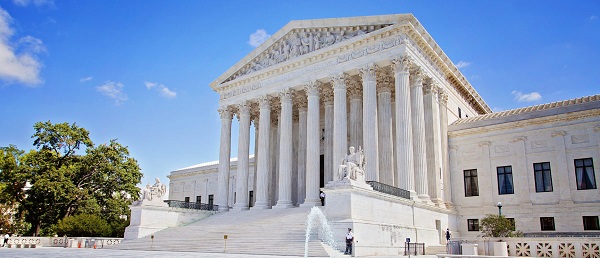
 Automotive2 days ago
Automotive2 days agoSupreme Court Delivers Blow To California EV Mandates
-

 Business15 hours ago
Business15 hours agoOutrageous government spending: Canadians losing over 1 billion a week to interest payments
-
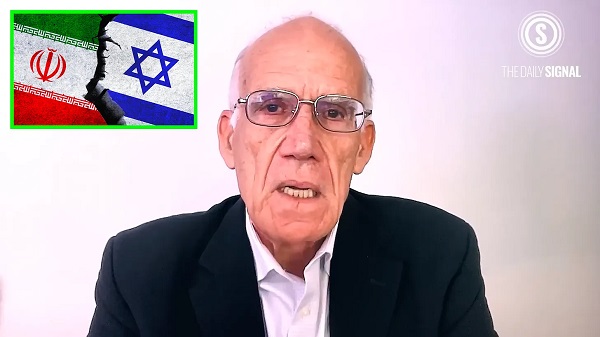
 conflict2 days ago
conflict2 days agoVictor Davis Hanson Makes a Disturbing Prediction About What Happens If Iran Survives
-
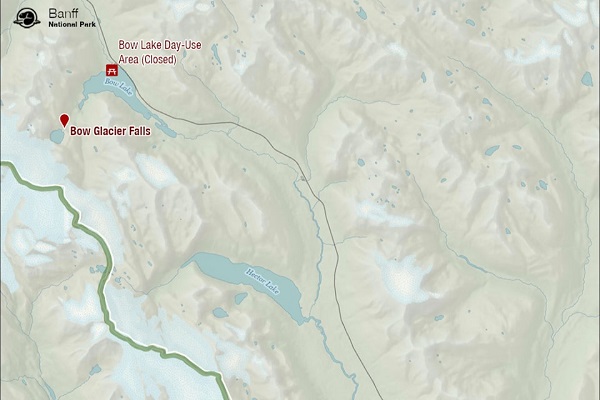
 Alberta2 days ago
Alberta2 days agoSecond body recovered from Bow Glacier Falls rockslide. Police identify first victim







